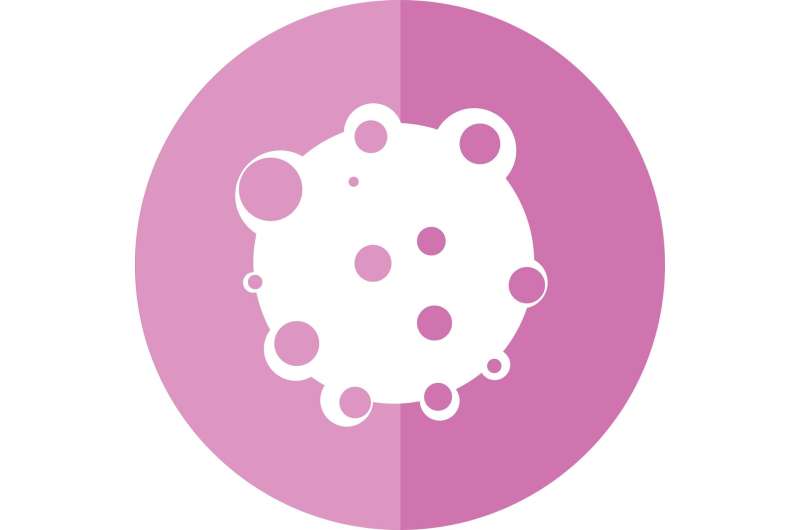Fine-tuning 3D lab-grown mini tumors to help predict how patients respond to cancer therapies


Credit: Pixabay/CC0 Public Domain
Scientists from the UCLA Jonsson Entire Most cancers Heart secure developed a brand new means to bioprint shrimp tumor organoids that are designed to mimic the characteristic and structure of true tumors. The improved route of enables researchers to exhaust an developed imaging means to gaze and analyze particular person organoids in gargantuan detail, which is able to succor researchers establish personalized treatments for folks with rare or tense-to-treat cancers.
The means is described within the journal Nature Communications.
“Tumor organoids secure change into fundamental instruments to compare tumor biology and highlight drug sensitivities of particular person sufferers,” said Alice Soragni, Ph.D., an assistant professor within the department of Orthopaedic Surgical treatment on the David Geffen College of Remedy at UCLA and member of the UCLA Jonsson Entire Most cancers Heart. “On the opposite hand, we peaceful need greater methods to appear forward to if resistance will be bobbing up in a tiny population of cells, which we could perchance no longer detect the exhaust of mature screening approaches. Here’s genuinely critical, specifically as organoid-essentially based entirely mostly drug predictions are starting to be leveraged clinically.”
These miniaturized tumors, called organoids, will also be grown in a lab the exhaust of cell lines or sufferers’ secure cells to raised perceive human biology and diseases. By recreating affected person tumors, researchers can take a look at a amount of medication to envision if the tumor will answer smartly or poorly to the treatment. This could occasionally invent it more uncomplicated for physicians to make a decision on the appropriate therapy for their sufferers.
While these mini tumors secure helped enhance drug modeling and are becoming worthwhile instruments for testing the efficacy and safety of capacity medication, it is a ways peaceful noteworthy for most trendy models to capture underlying tumor heterogeneity which ceaselessly drives clinically noticed resistance to therapy. One in every of the fundamental limitations of this means is that most trendy methods fail to capture changes or variations for the length of the organoid samples that will be accountable for the resistance to therapy that is noticed in scientific settings.
To conquer these challenges, the group of researchers created a mode that uses a bioprinting methodology to print cells in a thin layer of enhance extra-cellular proteins to give upward thrust to 3D mini-tumors without altering the tissue histology and gene expressions. The group mixed bioprinted cells with excessive-tempo live cell interferometry (HSLCI), an imaging plot that could perchance be a non-damaging means oldschool to pass trying for and measure the weight of living cells in true-time. These methods are then mixed with machine studying algorithms to compare and measure particular person organoids.
“By the exhaust of this means, we are in a position to precisely measure the a superb deal of hundreds of organoids concurrently,” said Dr. Michael Teitell, director of the UCLA Jonsson Entire Most cancers Heart and co-senior creator of the gaze. “This records helps establish which organoids are soft or immune to explicit therapies, which is able to be oldschool to love a flash pick essentially the most basic treatment alternate suggestions for sufferers.”
With the brand new means combination, researchers confirmed that they could perchance measure the growth patterns of the bioprinted tumor cells over time to envision how the cells responded to a amount of medication or treatments.
“The measurements were done in a mode that didn’t rupture or waste the organoids, taking into yarn non-invasive diagnosis of their growth and drug responses,” notorious Teitell.
The researchers were in a position to establish an cease of sure medication on cells as soon as six hours from including the therapies. The group also identified tiny groups of cells that didn’t answer to the medication, even within very homogeneous cell line samples consisting largely of cells that were attentive to the treatment.
“This new pipeline has enhanced the quality and depth of files we can web from drug screening of 3D models of illness,” said Soragni. “We’re now making exhaust of the an identical means to organoids established from tense-to-treat, rare cancers.”
The researchers will leverage the brand new means to portray new therapeutic avenues and mechanisms of resistance to within the rupture compose personalized treatment methods.
The co-first authors are Peyton Tebon, Bowen Wang and Alexander Markowitz, all from UCLA. Diversified UCLA authors encompass Ardalan Davarifar, Brandon Tsai, Alfredo Gonzalez, Sara Sartini, Huyen Nguyen, Nasrin Tavanaie, Thang Nguyen and Paul Boutros.
Citation:
Gorgeous-tuning 3D lab-grown mini tumors to succor predict how sufferers answer to cancer therapies (2023, June 6)
retrieved 6 June 2023
from https://medicalxpress.com/news/2023-06-unbiased-tuning-3d-lab-grown-mini-tumors.html
This doc is discipline to copyright. Apart from any superb-trying dealing for the reason for personal gaze or compare, no
segment could perchance be reproduced without the written permission. The stammer material is supplied for records purposes most efficient.











